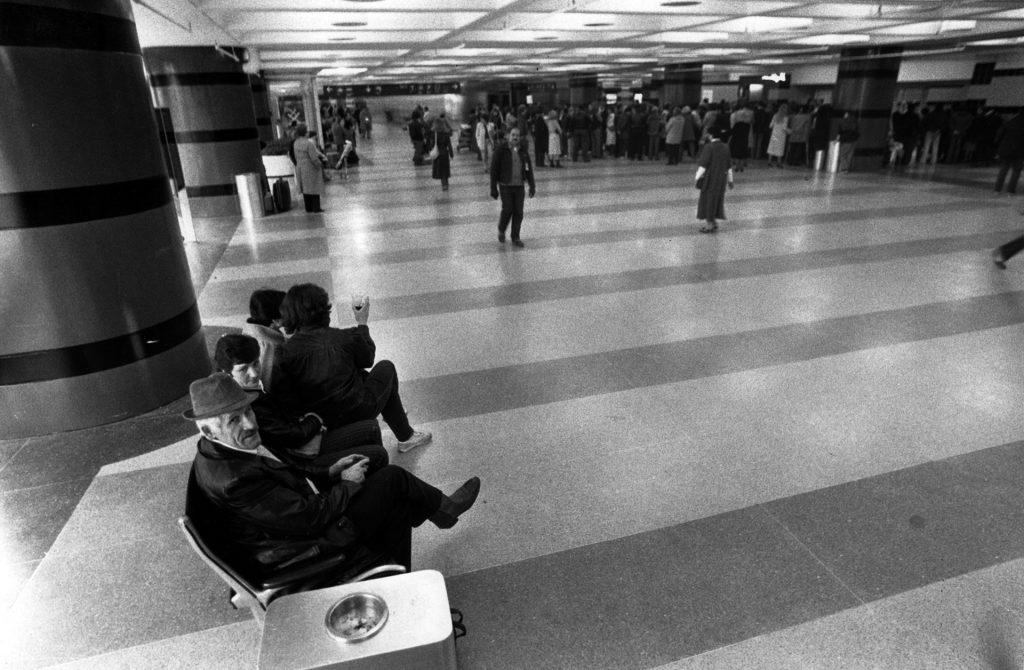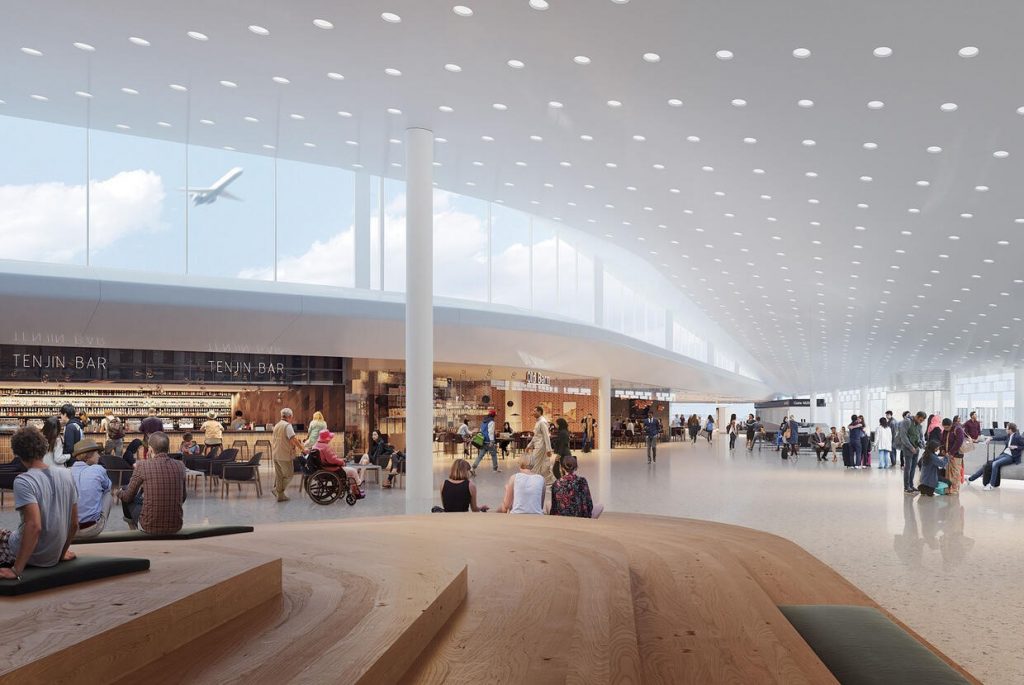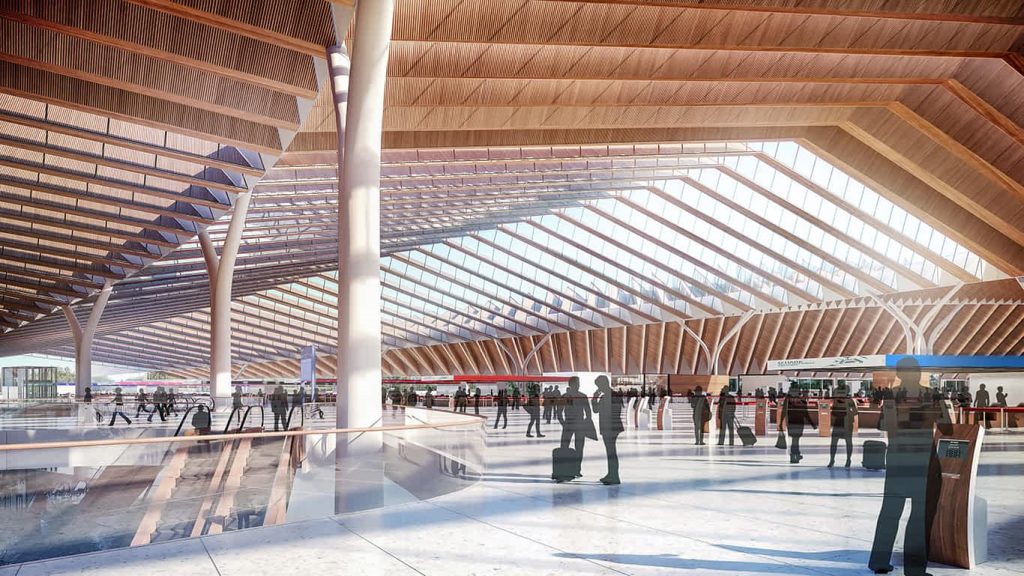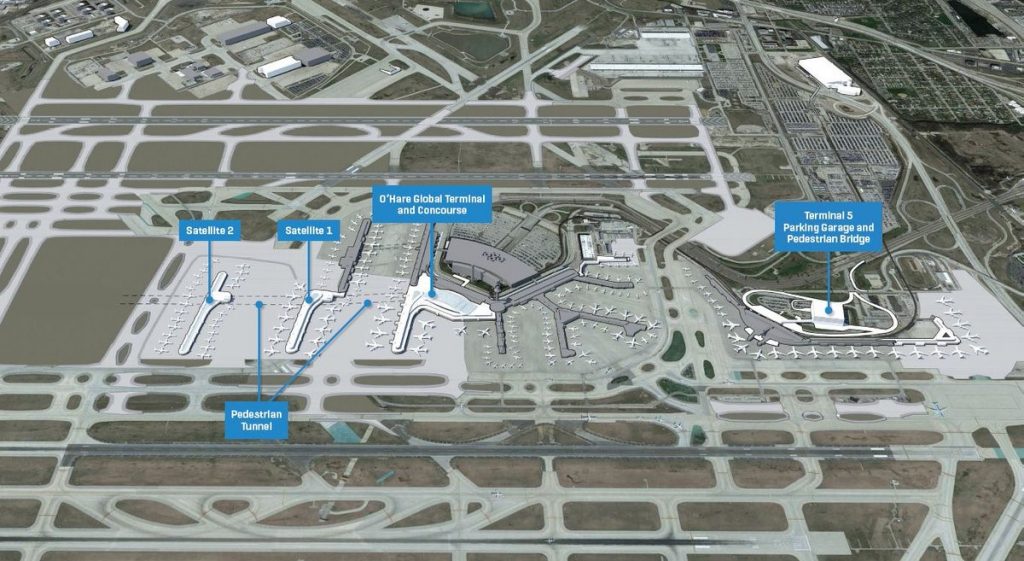Chicago O Hare Airport is one of the most populous place in the United States that is rich in history and architecture. The John Hancock Center, the Willis Tower, and the neo-Gothic Tribune Tower are among the skyscrapers that grace the city’s skyline. when comes to its airports, Chicago O’Hare International Airport, commonly referred to as O’Hare Airport is the largest airport in the US located 17 miles Northwest Side.
The current location within Airport appears to be something straight out of a science fiction film. It updates the modern airport by providing more room for passengers and employees, as well as ample self-parking. In this article, we will discuss the complete Tour Of Chicago O Hare Airport with its history.
Tour Of Chicago O Hare Airport:
Complete Tour Of Chicago O Hare Airport is mentioned below:
Beginning of Chicago O Hare Airport:

This was Once, Chicago O’Hare Airport was the busiest airport in the world for passenger traffic and aircraft movement. It held this title for three decades and become one of the great American infrastructure projects until the late 1950s before the jet age. However, its runways were too short for early jet aircraft. The long runway and terminals were constructed again. All flights shifted to O’Hare, in the northwest, in just a couple of years, and in 1962, O’Hare became the busiest airport in the world. It maintained this status for more than 25 years due to the high volume of passengers.
After a while, the runway arrangement that attracted jet aircraft was penalized by the city’s erratic environment and did not stand the test of time. In 1998 O’Hare lost the title of world’s busiest airport to Atlanta’s Hartsfield-Jackson.
Renovation of Chicago O Hare Airport:

The only way to regain lost status was to completely modernize the runway system which started in 2005. The Runaway system had been restructured and the work cost $6 billion dollars. The rest of the inside of the airport was revamped with an additional investment of 8.5 million dollars. In which all airport from the curb to the gate was transformed.
Chicago O Hare Airport Runways System:

O’Hare now has eight runways, six running parallel to each other and two running crosswise. Previously, it had three pairs of parallel runways that overlapped each other. These pairs were disrupted due to weather conditions.
According to Robert Hoxie, chief development officer at the Chicago Department of Aviation, “we now have the most efficient runway network of every civilian airport in the world.” “We’ve decreased delays around 65 percent, which means tens to thousands of flights are now on schedule which wasn’t before.
Chicago O Hare Airport Terminal Buildings:

O’Hare Airport runways system took a long time, but by 2015, conditions had improved sufficiently for the focus to shift to the terminal buildings. The initial passenger terminals were constructed in the late 1950s. They are more than 60 years old, and they simply don’t have the facilities that travelers demand, nor the capabilities that airlines require to run a strong connecting hub.
O’Hare 21, a bold concept to renovate the airport and make it fit for the twenty-first century, was born in 2019. A brand-new global terminal was built, in which two new satellite concourses were installed for Terminal 1, and a complete redesign of the existing Terminal 5The project includes almost 100 subprojects, most of which are relatively small but necessary for operational significant improvements, such as upgrades to parking areas, new water lines, electrical distribution systems, and renovated underground pedestrian passageways.
Chicago O Hare Airport Revamp Long-term project:

The revamp of Chicago O’Hare Airport is a long-term project. This work won’t be finished until 2028 but it will be executed in stages, much like the runway upgrade, gradually enhancing the airport. The majority of the funds will go into renovating the terminals, which will drastically improve the customer experience at O’Hare.
chief development officer at the Chicago Department of Aviation said they are investing up to a billion dollars to renovate Terminal 5, increasing capacity while also updating systems. The terminal would no longer be based on foreign flights, but rather on carriers that simply transport passengers to and from Chicago. Delta will also relocate to this location sometime this year. Ten new gates, a new luggage handling system, and new security checks are among the enhancements.
Chicago O Hare Global Terminal:

At the present, O’Hare has only one international terminal, which is distinct from the domestic terminal, requiring connecting travelers to change terminals. The 2.2 billion major investments will be in an entirely new global terminal dedicated to international traffic which will soon arise as a Terminal 2. It is the oldest facility that is still operational today.
The building’s design is based on a contested mark won by Chicago’s Studio ORD and is inspired by the Municipal Device, a municipal landmark. It’s an enclosed Y sign that represents the Chicago river’s north and south branches coming together. Likewise, the new global terminal will be Y-shaped, with a six-pointed crystal skylight at the intersection of the branches. Wooden pleats will be arranged to maximize natural light on the roof.
After Renovation Chicago O Hare Airport Condition:
After decades of renovation and improvement, the Chicago O’Hare airport once again is open to visitors, although things will be much different than before. Some portions of the new terminal Building 5, which is currently undergoing renovations, are now open to the public. Airline seats will be available for anyone who wants to go or spend the holidays. In addition to the variety of shopping areas, there are many dining options available, with everything from clothing to electronics being sold right inside the terminal doors.
what will be the future of Chicago O Hare Airport?

The new global terminal will be 80% larger than the existing terminal 2 in which nursing rooms, yoga studios, and a variety of food and beverage alternatives will be available. In the new Terminal 2, travelers will be able to clear up US customs, return to a safe area and stay a few minutes away from their own gate.
More than a million airline seats will be available for anyone who wants to go or spend the holidays. Visitors will also have access to a number of private Concours, such as the main jet concourse for large jets that can seat thousands upon thousands of passengers, even though most of them are not actually traveling or resting on the ground.
Gate capacity will increase by 25% by the completion of the project, and passenger terminal square footage will expand from around five million square feet which is currently under nine million square feet. Meanwhile, with passengers and construction coexisting, it will never close. The airport will be able to become an international hub that caters to the needs of 21st-century travelers.


